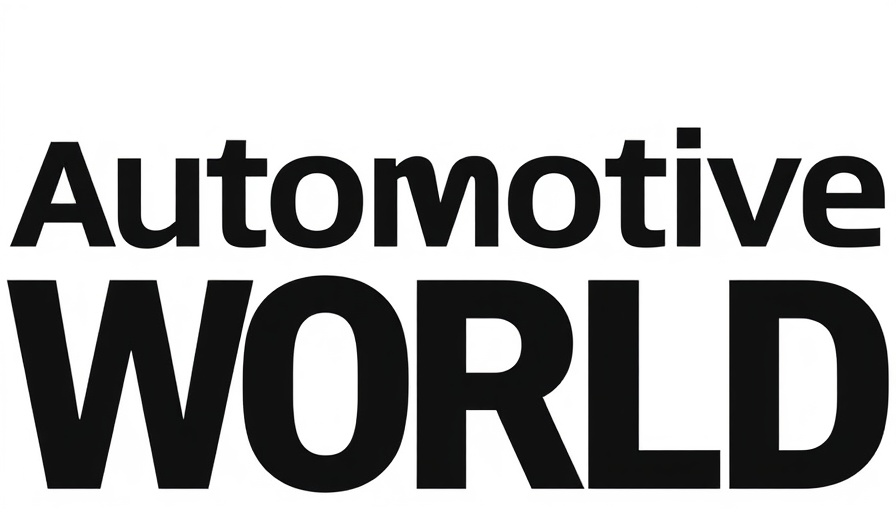
A Shift Towards Climate-Neutral Mobility: VDA's 10-Point Plan
The German automotive landscape is on the precipice of transformation, propelled by the urgent need to reduce CO₂ emissions in transport sectors. The latest endeavor spearheaded by the German Association of the Automotive Industry (VDA) is a comprehensive 10-point plan aimed at fostering climate-neutral mobility. As the automotive sector grapples with regulatory changes, technological advances, and shifting market demands, VDA calls for decisive action from policymakers to create an enabling framework for the successful integration of electromobility in both passenger and commercial vehicles.
Understanding the Climate Challenge
With climate change at the forefront of global discourse, the automotive industry faces unprecedented scrutiny over environmentally harmful emissions. As noted by VDA President Hildegard Müller, European automotive companies are committed to achieving Paris climate goals and have already invested substantial resources into developing CO₂-neutral drive systems. From 2025 to 2029, approximately €320 billion will go towards research and development in the sector. Despite these investments, the industry faces a unique set of challenges, including lower than expected demand for electric vehicles, a lack of robust charging infrastructure, and intense international competition.
The Necessity of Flexibility and Technological Openness
Central to the VDA's plea is the need for flexibility and technological openness in governmental approaches to climate policies. Recognizing that regulatory frameworks must adapt to the rapidly changing landscape of the automotive sector is crucial for the long-term viability of the industry. In particular, the current scrutiny over CO₂ fleet regulations has not only posed challenges but has also stalled progress towards meeting Europe’s ambitious climate targets.
Strategic Outlook: The Role of Policymakers
As industry leaders convene for the Strategic Dialogue on the Future of the European Automotive Industry in Brussels, the clarity of political action becomes more essential than ever. Müller emphasizes that failed regulatory measures could stifle investments in electromobility and infrastructure essential for EV success, like widespread charging stations.
Investments and Innovations: A Glimpse into the Future
To achieve climate goals while maintaining competitiveness, European automotive companies foresee an electric future where nearly half of the cars produced in Germany are expected to be electric by the year's end. However, this ambitious forecast hinges significantly on policy reform at the EU level. The challenge lies not only in overcoming economic obstacles but also in addressing trade restrictions, such as the tariffs imposed on electric cars from China, which have added further strain to the market.
Equipping the Workforce for a New Era
To support these high-stakes transformations, there is a pressing need for a well-trained workforce. Initiatives that promote automotive training and online courses tailored to evolving technologies will be crucial. By equipping future automotive professionals with the necessary skill set, the industry can better respond to the rapid advancements and shifting consumer desires.
The VDA's proposal serves as a clarion call not just for the automotive industry but also for every stakeholder involved—from policymakers to industry leaders. By aligning climate goals with a commitment to competitiveness, Europe can forge a path forward that ensures a robust automotive industry while safeguarding environmental standards.
As the industry continues to navigate these transformative changes, it's vital to stay informed and be proactive in adopting new technologies and practices that will not only benefit the environment but also enhance business prospects. If you're looking to engage more deeply in the evolving automotive space, consider exploring automotive training programs and courses that can bolster your knowledge and adaptability in this dynamic landscape.
 Add Row
Add Row  Add
Add 




Write A Comment